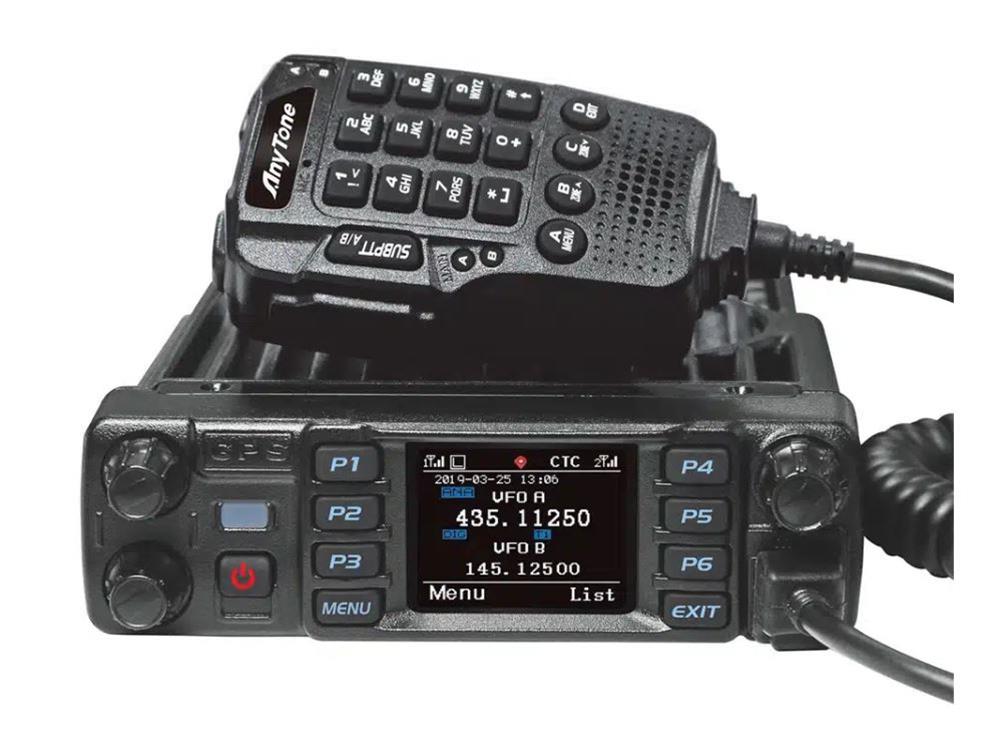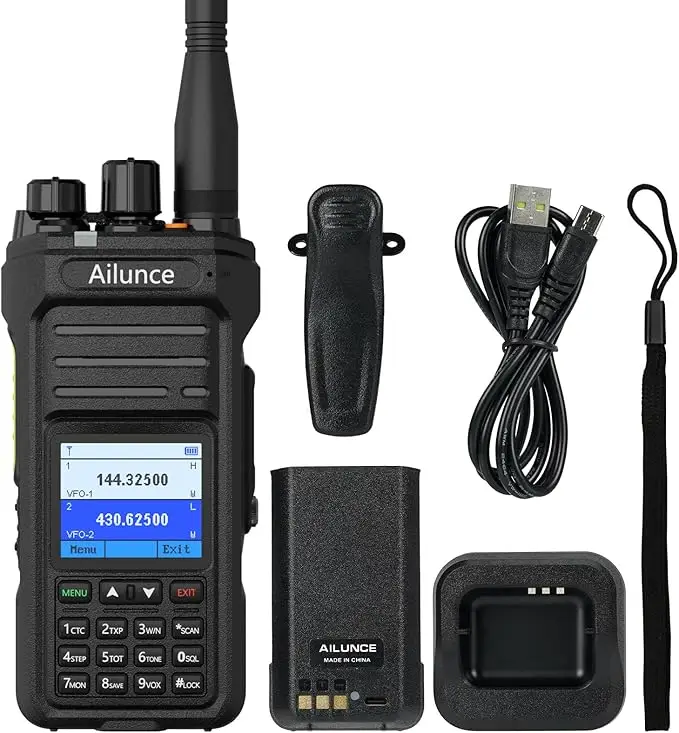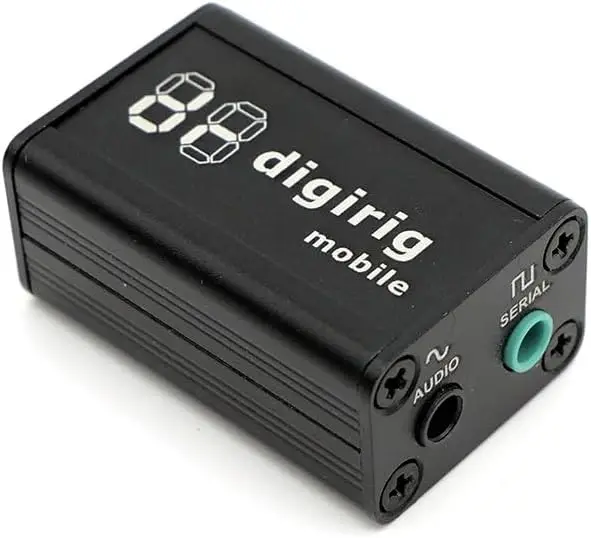The amateur radio DMR landscape has transformed dramatically over the past few years, with Chinese manufacturers leading the charge in making digital voice accessible to everyday hams. The AnyTone AT-D578UV III Pro represents the latest iteration in a line that has become synonymous with feature-rich, affordable DMR operation. After extensive testing in various configurations and environments, I can tell you this radio is both impressive and occasionally frustrating – a combination that seems almost inherent to the current state of amateur DMR.
Affiliate Disclosure:
“Just so you know, some of the links on this page are affiliate links. This means if you decide to make a purchase through one of those links, I might earn a small commission at no extra cost to you. Your support helps keep this content going—thank you!”
Understanding the Evolution
Before diving into the III Pro specifically, it’s worth understanding where this radio came from. The original AT-D578UV broke ground as one of the first affordable DMR mobiles with a color screen and analog/digital functionality. The Pro version added Bluetooth and enhanced processing power. The II Pro brought APRS functionality and improved firmware. Now, the III Pro adds a larger screen, enhanced Bluetooth capabilities, and further refinements.
This iterative approach has created a mature platform, but it’s also resulted in some confusion. Features vary between versions, firmware updates don’t always work across models, and documentation hasn’t always kept pace with development. The III Pro benefits from all these learning experiences while adding its own unique capabilities to the mix.
Physical Design and Build Quality
The AT-D578UV III Pro maintains the same compact form factor as its predecessors, measuring approximately 140mm wide, 167mm deep, and 48mm tall. At just over a kilogram, it’s remarkably light for a dual-band mobile with this feature set. The size makes it ideal for modern vehicles with limited dash space, and the included mounting bracket offers flexible installation options.
Build quality sits firmly in the “good enough” category. The metal chassis feels solid, and the heat sink fins run the full length of the radio’s back panel. However, this isn’t Kenwood or Icom level construction – the plastics feel slightly cheaper, and the buttons have a bit more play than you’d find in premium radios. That said, my test unit has bounced around in a mobile installation for months without any issues.
The new 2.0-inch TFT color display is a significant upgrade from earlier versions. At 320×240 pixels, it’s sharp enough to display detailed information while remaining readable in bright sunlight. The viewing angle is impressively wide, important for mobile installations where you’re not always looking straight at the radio. The automatic brightness adjustment works well, though I found myself preferring manual control for consistency.
Control Interface and Ergonomics
The front panel layout reflects thoughtful design within space constraints. The volume and channel knobs feel distinct enough to operate by touch, crucial for mobile operation. The D-pad navigation system works well once you understand the logic, though the learning curve is steeper than traditional button layouts.
The microphone deserves special mention – it’s surprisingly good for a included accessory. The DTMF keypad buttons have positive tactile feedback, and the programmable function keys prove genuinely useful. The up/down buttons on the mic allow channel changes without reaching for the radio, a safety benefit while driving.
Menu navigation follows a logical structure, but the sheer number of options can overwhelm newcomers. With over 200 menu items spread across multiple categories, you’ll spend considerable time with the manual initially. Frequently used functions are accessible through programmable buttons and shortcuts, but discovering these shortcuts requires dedication to reading documentation.
DMR Performance and Features
DMR operation is where the AT-D578UV III Pro truly shines. The radio supports both DMR Tier I (simplex) and Tier II (repeater) operation, with dual timeslot capability for efficient spectrum use. Audio quality in digital mode is excellent – clear, full, and free from the tinny quality that plagued early DMR radios. The AMBE+2 vocoder implementation seems well-optimized, maintaining intelligibility even with weak signals.
The radio handles 500,000 contacts, 10,000 talk groups, and 4,000 channels – numbers that exceed any practical amateur requirement. The zone-based organization system, while initially confusing for analog operators, makes sense once you understand DMR’s structure. Each zone can contain 250 channels, allowing logical grouping of repeaters and talk groups.
Roaming functionality works reliably, automatically switching between repeaters as you travel. This feature alone transforms DMR mobile operation, maintaining connection to your chosen talk group across a wide geographic area. The implementation isn’t perfect – occasionally it hangs onto a marginal repeater too long – but it’s generally effective.
The promiscuous mode, allowing reception of all talk groups on a repeater, proves invaluable for understanding local DMR activity. Similarly, the monitor mode that opens squelch for all DMR traffic helps when programming new repeaters or diagnosing connection issues.
Analog Performance
While DMR gets the headlines, the AT-D578UV III Pro’s analog performance deserves recognition. The receiver sensitivity measures excellent across both VHF and UHF bands, typically better than 0.2μV for 12dB SINAD. The receiver’s dynamic range impresses for a radio at this price point, handling strong adjacent signals better than many budget offerings.
Transmit audio in analog mode is clean and well-balanced, though perhaps slightly bass-heavy compared to Japanese radios. The 50-watt VHF and 45-watt UHF power output ratings prove conservative – my test unit consistently produces 55+ watts on VHF and 48+ watts on UHF when fed 13.8 volts.
The CTCSS/DCS implementation works flawlessly, with rapid decode and clean encode. The radio supports split CTCSS/DCS tones for those odd repeater configurations, and the tone scanning feature helps identify unknown repeater access tones.
APRS Implementation
The addition of APRS functionality in the II Pro and refined in the III Pro brings legitimate packet capability to the platform. Both analog APRS (traditional 1200 baud packet) and DMR APRS (using DMR data channels) are supported, though the analog implementation proves more useful given APRS’s established infrastructure.
With an optional GPS antenna connected, the radio becomes a capable APRS tracker. Position beaconing works reliably, and the ability to send and receive APRS messages directly from the radio adds tactical capability. The moving map display, while basic compared to dedicated APRS units, provides useful situational awareness.
The APRS digipeater functionality makes the radio useful for special events or emergency communications, though the implementation has limitations. You can’t simultaneously use the radio for voice while digipeating, and the settings aren’t as flexible as dedicated APRS equipment.
Bluetooth Capabilities
The III Pro’s enhanced Bluetooth system represents a meaningful upgrade. Bluetooth audio works reliably with various headsets and speakers, with good audio quality and minimal latency. The ability to use wireless PTT buttons adds operating convenience, particularly for mobile operation.
Bluetooth programming via smartphone or tablet is a game-changer for on-the-fly adjustments. While the mobile app isn’t as comprehensive as the desktop software, it handles common tasks like adding repeaters or adjusting settings. This proves invaluable when you need to program a new repeater while standing at the site.
The Bluetooth CAT control functionality opens interesting possibilities for digital mode operation, though implementation remains somewhat limited. Third-party developers are beginning to leverage these capabilities, suggesting future potential.
Programming and Software
Programming the AT-D578UV III Pro requires dedication and patience. The included software works but feels clunky compared to modern standards. The interface resembles a complex spreadsheet, and the learning curve is steep for those unfamiliar with DMR concepts.
The code plug structure (the radio’s configuration file) follows DMR commercial radio conventions, requiring understanding of color codes, timeslots, talk groups, and zones. For analog-only operators, this represents a significant learning hurdle. Fortunately, the amateur DMR community provides extensive resources, including pre-built code plugs for many areas.
Software updates arrive frequently, generally adding features and fixing bugs. The update process works reliably, though it requires Windows and the correct cable. The community has developed alternative programming tools, though official support remains Windows-only.
Real-World Mobile Installation
Installing the AT-D578UV III Pro in a vehicle proves straightforward thanks to its compact size. The included bracket offers multiple mounting angles, and the radio’s light weight doesn’t stress mounting points. The detachable faceplate option (with optional cable) allows for flexible installation in vehicles with limited dash space.
Power consumption is reasonable – approximately 500mA on receive and 11-13A on high-power transmit. The radio includes proper protection circuitry and filtering, producing minimal alternator whine or ignition noise in most vehicles.
Heat management during extended transmissions impressed me. Even during lengthy ragchews at full power, the radio maintained stable operation with the fan cycling appropriately. The fan noise is noticeable but not objectionable, comparable to other mobile radios in this power class.
GPS Integration and Features
The built-in GPS option (requiring an external GPS antenna) adds significant functionality beyond APRS. The radio can display your current position, heading, and speed on the main screen. More importantly, it enables automatic zone selection based on location – the radio switches to appropriate channel groups as you travel between areas.
The GPS logging feature records your travel path, useful for reviewing coverage areas or documenting public service event routes. While not as sophisticated as dedicated GPS units, it’s a useful addition that leverages existing hardware.
Cross-Band Repeat and Unique Features
The cross-band repeat functionality works well, allowing the radio to serve as a portable repeater between bands. This proves useful for extending handheld coverage during events or emergency operations. The implementation includes proper identification options to remain legal.
The III Pro includes some unique features worth noting. The spectrum analyzer and signal strength meter provide visual feedback about band activity. The voice recorder can store received audio for later playback, useful for logging important information. The Bluetooth voice prompts can announce channel changes and other operations, helpful for visually impaired operators.
Comparing to Competition
Against other DMR mobiles, the AT-D578UV III Pro holds its own. The Retevis RT-90 offers similar basic functionality at a lower price but lacks the refined features and APRS capability. The TYT MD-9600 provides comparable features but with a different interface philosophy and without the III Pro’s Bluetooth enhancements.
Compared to commercial DMR radios like the Motorola XPR series, the AnyTone obviously lacks the rock-solid build quality and refined operation. However, it offers features like APRS and cross-band repeat that commercial radios don’t support, at a fraction of the price.
Traditional analog/D-STAR/System Fusion mobiles from the major manufacturers offer better build quality and simpler operation but lack DMR capability and cost significantly more. For DMR-focused operators, the AT-D578UV III Pro provides compelling value.
Frustrations and Limitations
This radio isn’t without its frustrations. The documentation, while improved, still suffers from translation issues and assumes familiarity with DMR concepts. Features are sometimes buried in non-intuitive menu locations. The Windows-only programming software feels dated and occasionally crashes.
The receiver’s front end, while good, isn’t exceptional. In high-RF environments, you might experience desensing or intermod that premium radios would handle better. The automatic gain control can be aggressive, making weak signal work challenging.
DMR’s inherent complexity means this will never be a “turn on and talk” radio like analog FM mobiles. The learning curve is real, and operators expecting simplicity will be disappointed.
Long-Term Reliability
While the AT-D578UV III Pro is relatively new, the platform has proven reasonably reliable over several generations. Early firmware versions had stability issues, but recent updates have addressed most problems. The radio includes decent protection against voltage spikes and reverse polarity, though adding external protection never hurts.
Heat dissipation appears well-managed, and components seem appropriately rated for amateur service. However, this isn’t commercial-grade equipment – expect a shorter lifespan than premium radios if used heavily.
The Verdict
The AnyTone AT-D578UV III Pro represents remarkable value in the DMR mobile market. For around $400-450, you get dual-band analog and DMR capability, APRS functionality, Bluetooth connectivity, GPS integration, and a host of features that would have seemed impossible at this price point just a few years ago.
The radio excels for DMR enthusiasts willing to invest time in understanding its capabilities. The combination of DMR and analog modes provides maximum flexibility, while features like APRS and cross-band repeat add genuine utility. The Bluetooth enhancements and larger display of the III Pro version justify the premium over earlier models.
However, this isn’t the right radio for everyone. Operators seeking simplicity should look elsewhere – perhaps at analog-only options or single-mode digital radios. The learning curve is steep, and the interface occasionally frustrates even experienced users.
For DMR-curious amateurs, the AT-D578UV III Pro offers an affordable entry into digital voice with room to grow. The radio’s extensive feature set means you’ll discover new capabilities months after purchase. While it lacks the refinement of premium radios, it delivers remarkable functionality at a price that doesn’t require a second mortgage.
The amateur DMR ecosystem continues evolving rapidly, and the AT-D578UV III Pro positions itself well for this future. Regular firmware updates add features and improvements, while the growing community provides support and resources. It’s not perfect, but it represents the current sweet spot of features, performance, and affordability in amateur DMR mobiles.
Would I recommend it? For DMR-focused operators, absolutely. For those wanting to explore DMR while maintaining analog capability, yes. For operators seeking maximum simplicity or premium build quality, consider alternatives. The AT-D578UV III Pro isn’t the best radio for everyone, but for its target audience, it might be the best value in amateur radio today.



